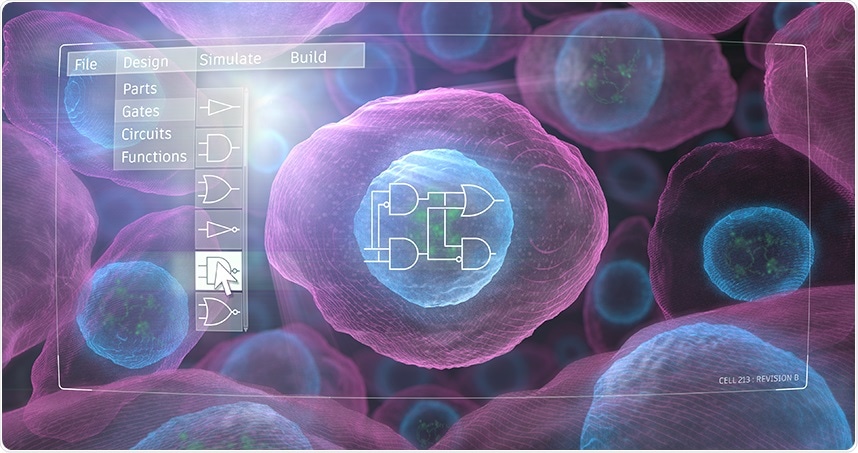Joshua Leonard, a synthetic biologist from Northwestern University, used electronic kits to create devices when he was a child. Currently, Leonard and his team have created a design-driven process that makes use of components from a highly different kind of toolkit to construct intricate genetic circuits for cellular engineering.

Synthetic biologists achieve a breakthrough in the design of living cells. Image Credit: Justin Muir.
One of the most interesting frontiers in the field of medicine is the use of living cells as therapies. Using this strategy to treat cancer, for instance, several patients have been cured of the formerly untreatable diseases. These developments use the techniques of synthetic biology, an emerging field that combines tools and ideas from engineering and biology.
The new technology developed by Northwestern University employs computational modeling to more efficiently detect valuable genetic designs prior to building them in the laboratory. Faced with countless possibilities, modeling point investigators can now design that provides a real opportunity.
To engineer a cell, we first encode a desired biological function in a piece of DNA, and that DNA program is then delivered to a human cell to guide its execution of the desired function, such as activating a gene only in response to certain signals in the cell's environment.”
Joshua Leonard, Synthetic Biologist, Northwestern University
Leonard headed the research team from Northwestern University in association with Neda Bagheri from the University of Washington for this research work.
Leonard is also an associate professor of chemical and biological engineering in the McCormick School of Engineering and a leading faculty member within the Center for Synthetic Biology at Northwestern University. Leonard’s laboratory is focused on applying this kind of programming capability to develop therapies, like engineered cells that stimulate the immune system, to treat cancer.
Bagheri is an associate professor of biology and chemical engineering and also a Washington Research Foundation Investigator at the University of Washington Seattle. Bagheri’s laboratory uses computational models to better interpret—and thus manage—cell decisions. Leonard and Bagheri have jointly advised Joseph Muldoon, a recent doctoral student and the first author of the study.
Model-guided design has been explored in cell types such as bacteria and yeast, but this approach is relatively new in mammalian cells.”
Joseph Muldoon, Study First Author and Doctoral Student, Northwestern University
The study, which developed and verified a large number of genetic circuits, will be published on in the Science Advances journal on February 19th, 2021. Similar to other synthetic biology technologies, a major feature of this strategy is that it is meant to be instantly adopted by other bioengineering teams.
So far, it is still hard and time-intensive to create genetic programs when depending on trial and error. It is also difficult to apply biological functions beyond much simpler ones. The team employed a “toolkit” of genetic components developed in Leonard’s laboratory and combined these components with computational tools for replicating several possible genetic programs before performing experiments.
The researchers observed that a wide range of genetic programs, each of which performs a required and useful function in a human cell, can be built such that every program works as anticipated. In addition, the designs also worked the first time.
In my experience, nothing works like that in science; nothing works the first time. We usually spend a lot of time debugging and refining any new genetic design before it works as desired. If each design works as expected, we are no longer limited to building by trial and error. Instead, we can spend our time evaluating ideas that might be useful in order to hone in on the really great ideas.”
Joshua Leonard, Synthetic Biologist, Northwestern University
Bagheri added, “Robust representative models can have a disruptive scientific and translational impact. This development is just the tip of the iceberg.”
The genetic circuits designed and applied in this analysis are also more complicated than the earlier sophisticated ones. This advancement provides a chance to design cells to carry out more advanced functions and to make treatments safer and more effective.
“With this new capability, we have taken a big step in being able to truly engineer biology,” Leonard concluded.
Source:
Journal reference:
Muldoon, J. J., et al. (2021) Model-guided design of mammalian genetic programs. Science Advances. doi.org/10.1126/sciadv.abe9375.